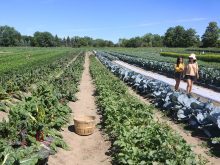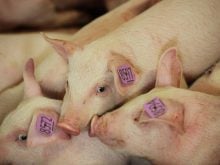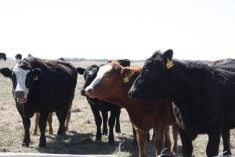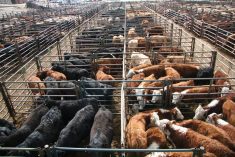AIRDRIE, Alta. – An integrated pasture plan is needed to encourage fertility, plant growth and weed control, says Scott Middleton of Dow Agro Science.
“If you are just going to employ one tool then you are going to get some benefit to turn around that pasture, but when you start to use a number of them at one time you will see the benefit,” he said at a pasture meeting in Airdrie.
The goal is to grow more grass for animal growth, but if weeds and brush have moved in, up to 60 percent grazing is lost.
Read Also

Canada told trade crisis solutions in its hands
Canadians and Canadian exporters need to accept that the old rules of trade are over, and open access to the U.S. market may also be over, says the chief financial correspondent for CTV News.
His company offers specialized herbicides for weed and brush control on pasture.
One product, Grazon, removes invasive broad-leafed weeds and provides a competitive edge to higher quality and more palatable forages. This saves breaking up and reseeding weed-ridden pastures.
“You’re not assuming that risk of whether or not you will be successful in re-establishing a perennial stand,” he said.
The company has monitored 20 sites in Alberta for the last four years and found success within the first year, with more dry matter production in ensuing years.
“The research demonstrated over four years after a single Grazon application we were growing roughly 500-600 dry matter pounds of production.”
He said it is important to read labels to see how long cattle need to be removed from a sprayed site.
Grazon controls weeds by affecting a growth hormone found only in plants, so withdrawal time is not likely necessary except for dairy cows.
Applicators need to be careful when spraying near flowing water or yards because trees and gardens are susceptible.
Dow’s Remedy herbicide controls brush problems.
Aspen, wild roses, small willows and brush encroachment usurps grass production. Once these plants have been sprayed, they are not likely to return for 12-14 years.















